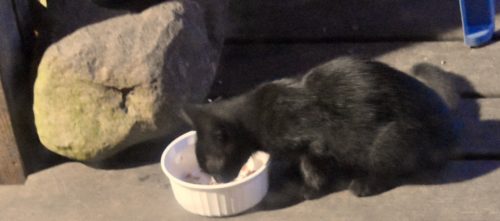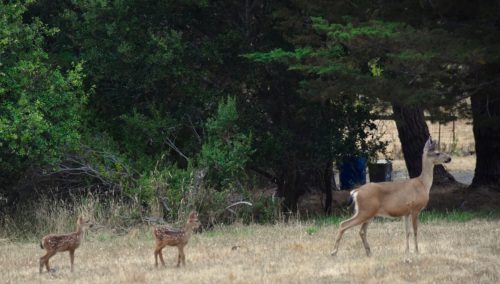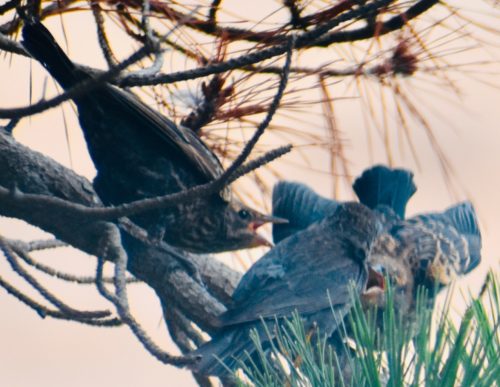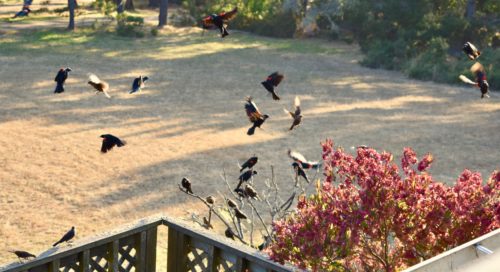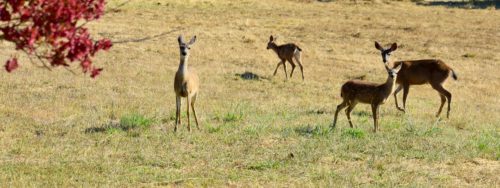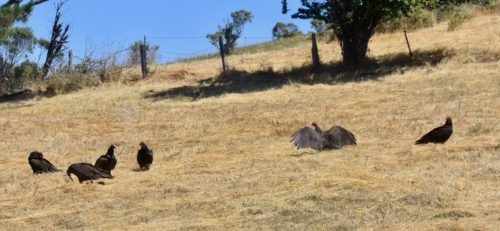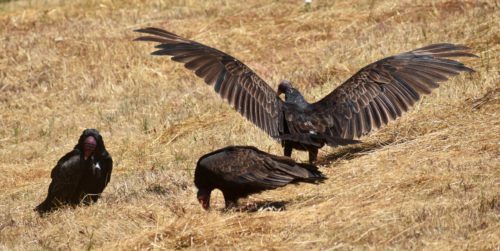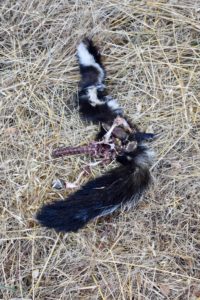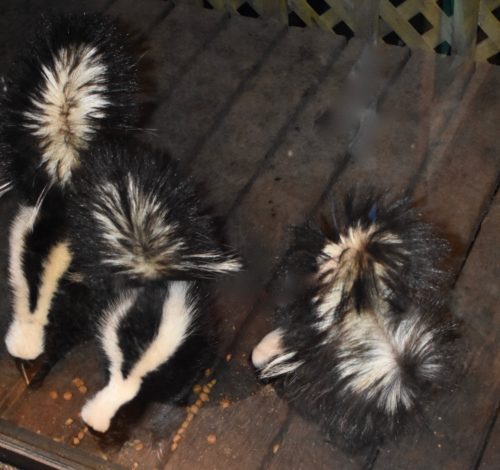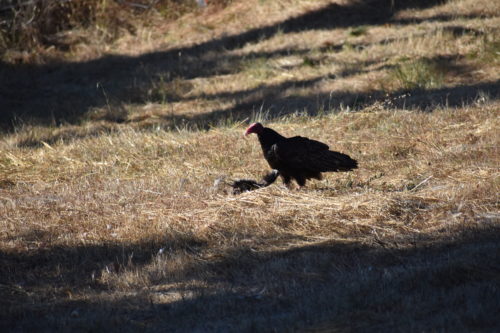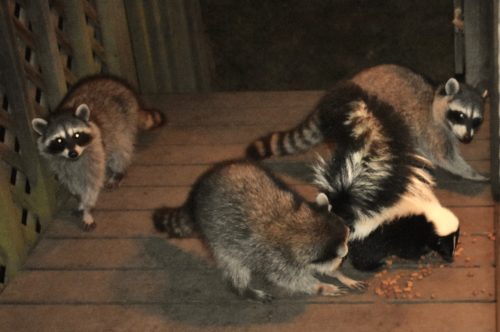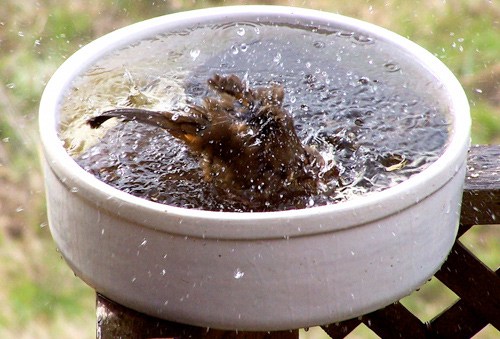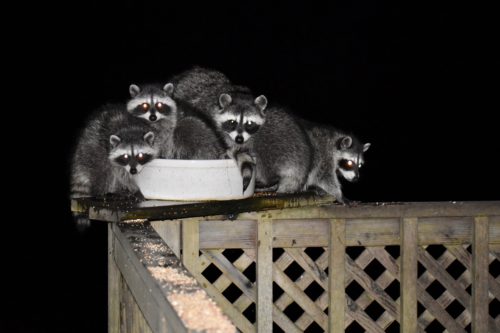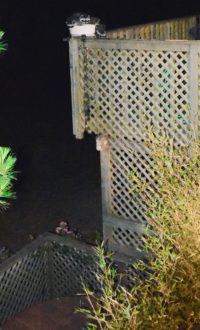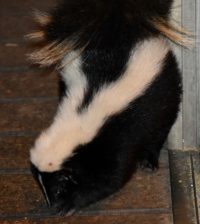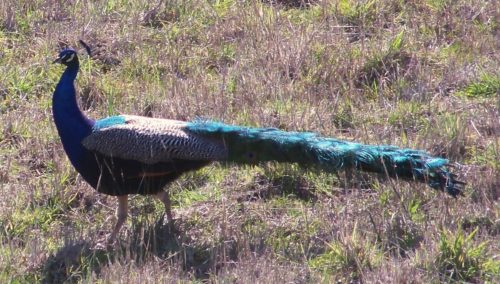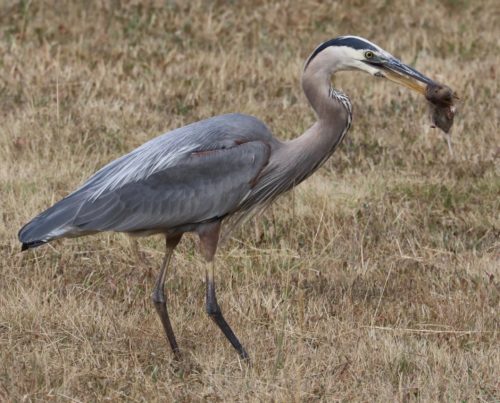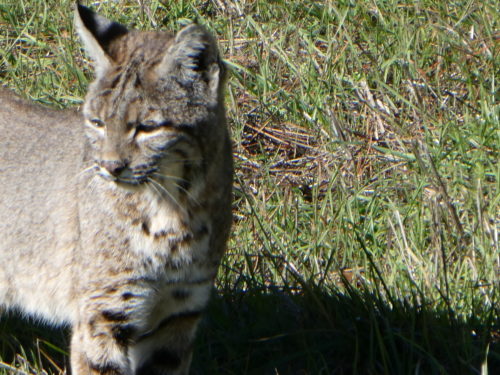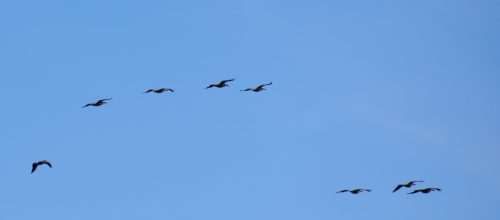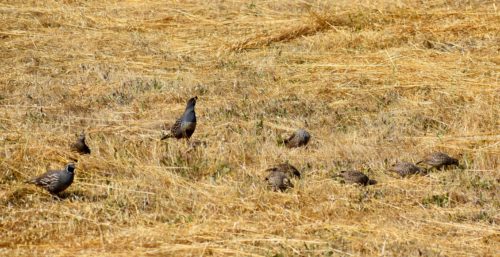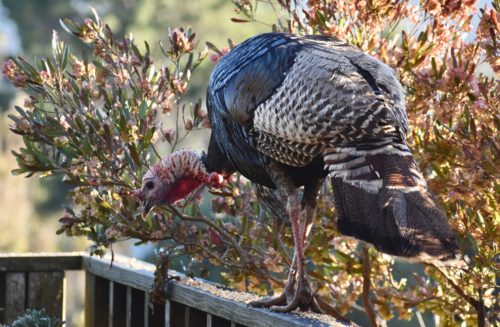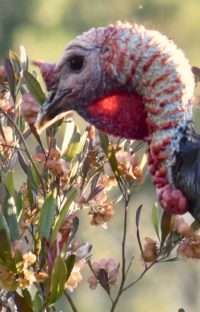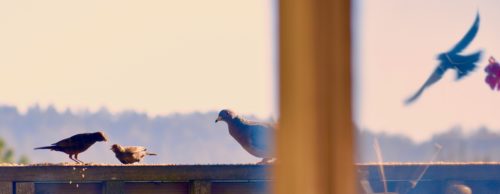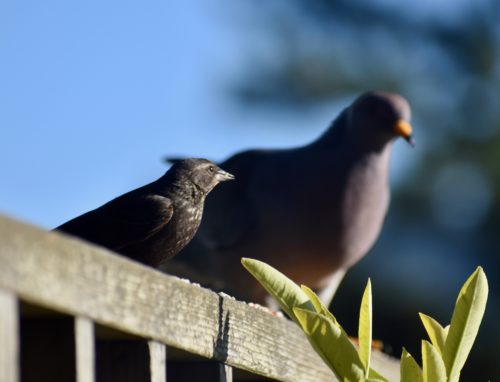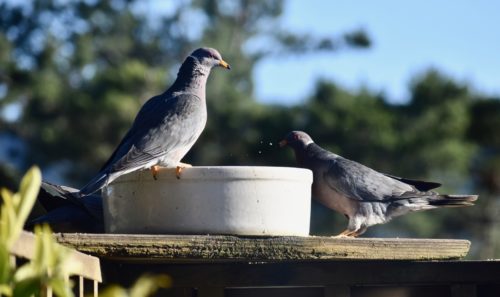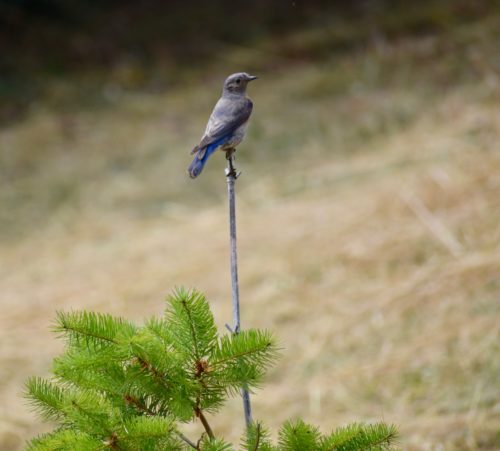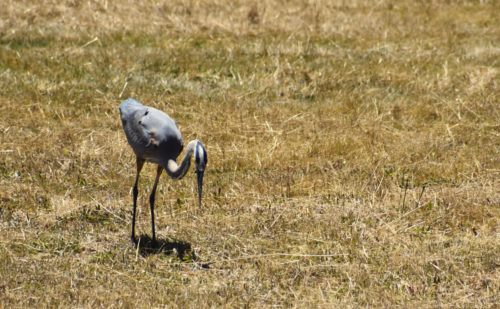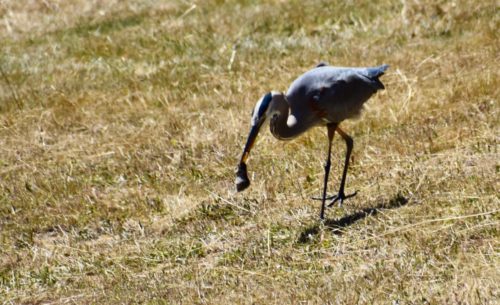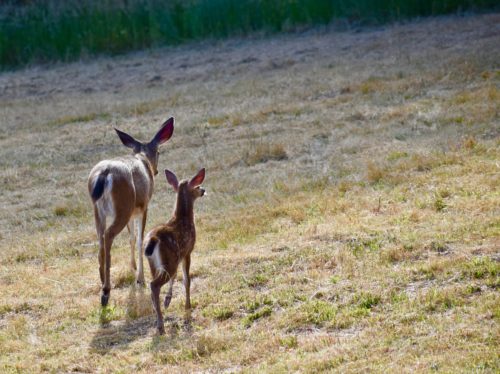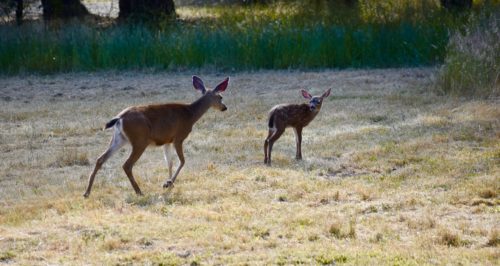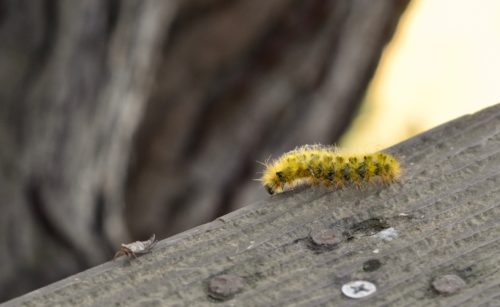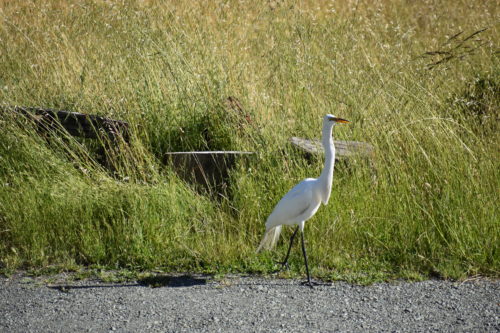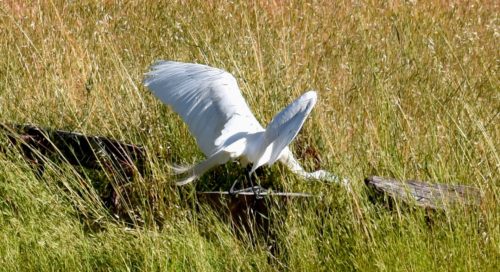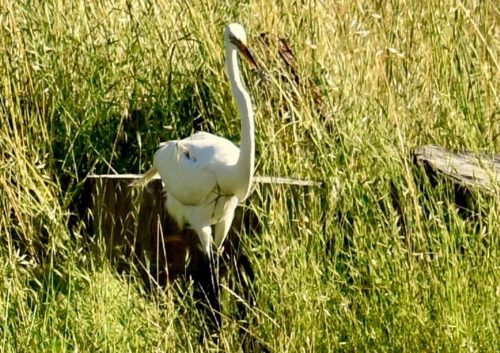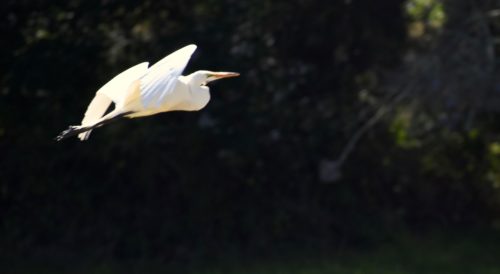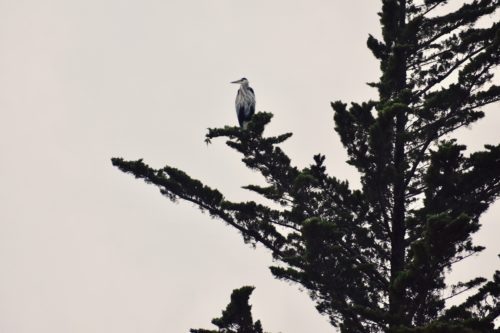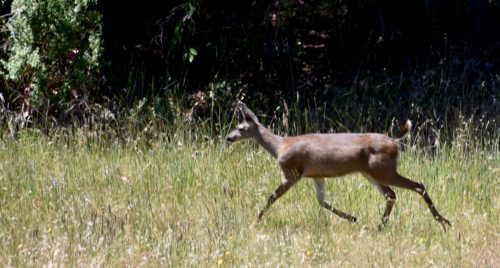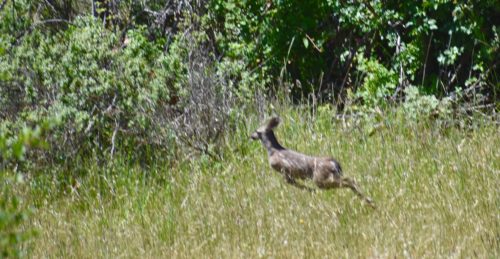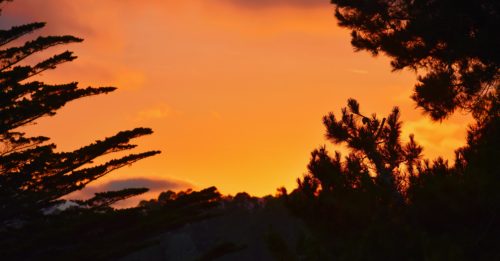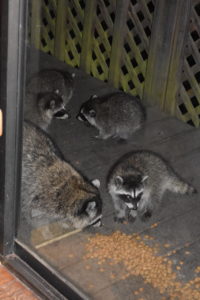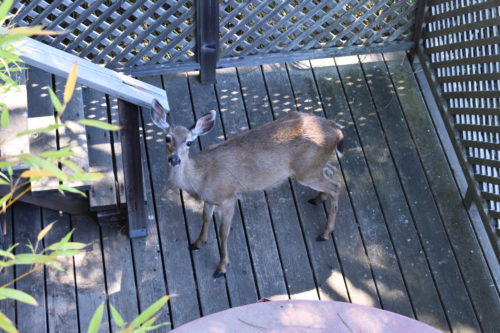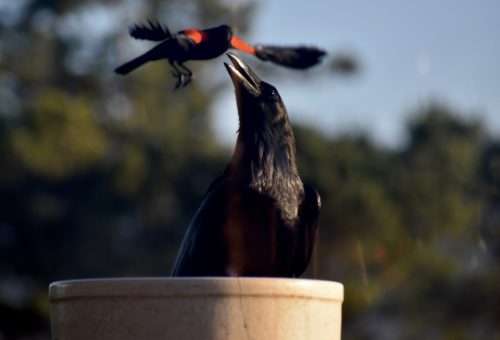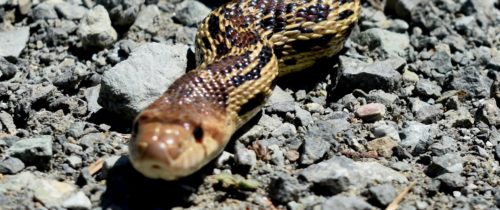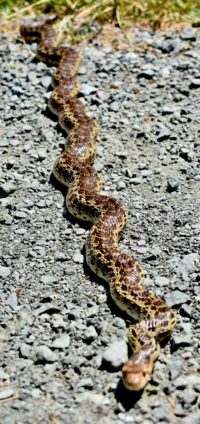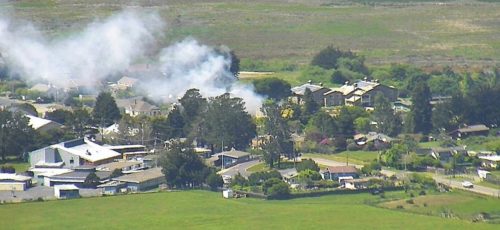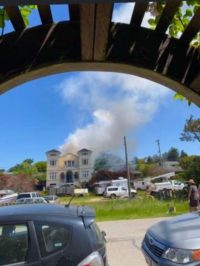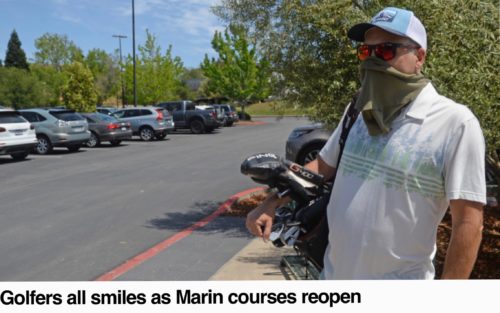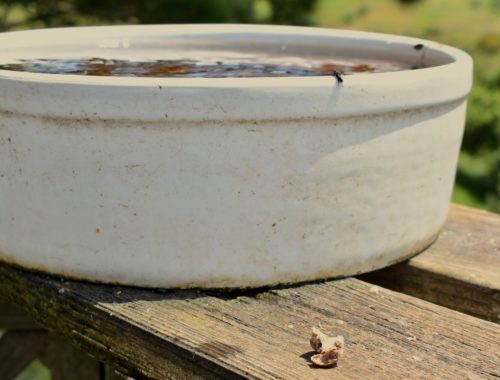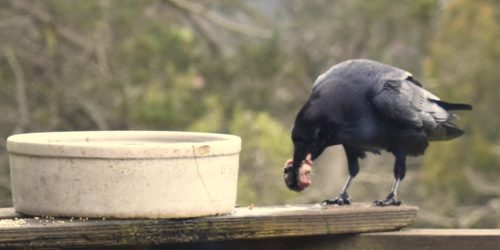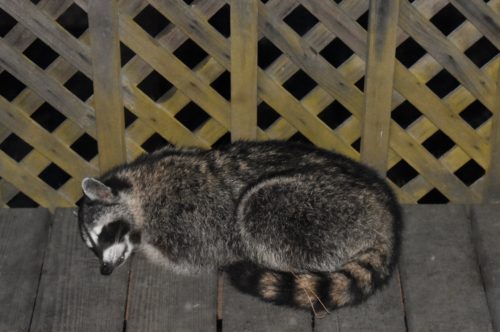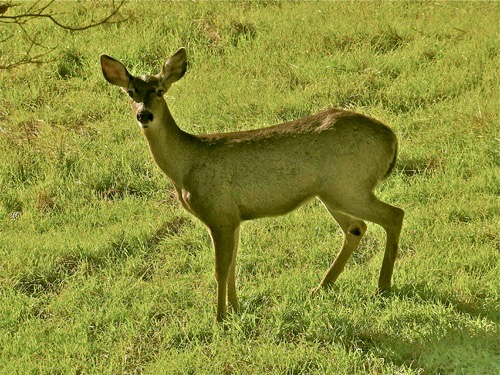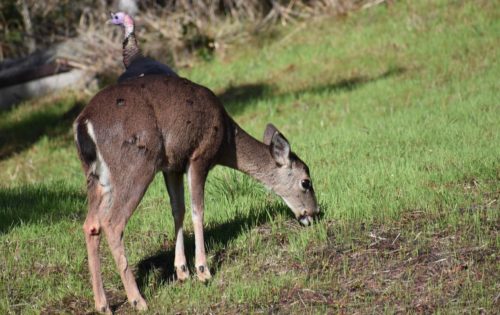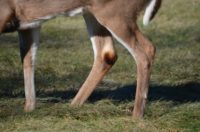Mon 3 Aug 2020
A jackass rabbit, social-distancing blackbirds, giving away a piece of tail, & two more short poems
Posted by DavidMitchell under Photography, The arts, West Marin nature, Wildlife
Comments Off on A jackass rabbit, social-distancing blackbirds, giving away a piece of tail, & two more short poems
Caveat lectorem: When readers submit comments, they are asked if they want to receive an email alert with a link to new postings on this blog. A number of people have said they do. Thank you. The link is created the moment a posting goes online. Readers who find their way here through that link can see an updated version by simply clicking on the headline above the posting.

Redwing blackbirds waiting for a dinner of birdseed at Mitchell cabin maintain proper social distancing (relative to size).
They say the Covid-19 pandemic is especially bad for older people. As a 76 year old, I can vouch for that. Like a lot of others my age and older, I wear hearing aids. Unfortunately, part of each aid sits outside the ear, and anti-virus masks are usually secured around the ears. As a result, our hearing aids sometimes get pulled off when we remove our safety masks. Goddamn virus.
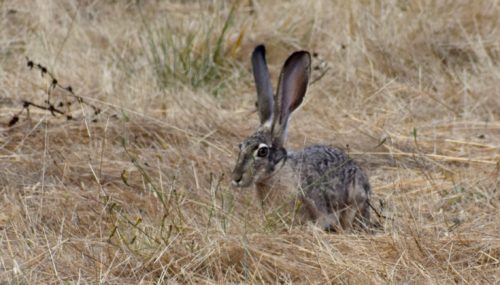
Jackrabbit behind Mitchell cabin last Saturday.
“Jackrabbits are actually hares, not rabbits,” according to National Geographic. “Hares are larger than rabbits, and they typically have taller hind legs and longer ears. Jackrabbits were named for their ears, which initially caused some people to refer to them as ‘jackass rabbits.’ The writer Mark Twain brought this name to fame by using it in his book of western adventure, Roughing It. The name was later shortened to jackrabbit.”

A fence lizard with part of its tail missing.
Most of us are aware that lizards can lose a big piece of their tails and survive. To quote a Washington State University online explanation: “Lizards have a series of small bones that run down their back… called vertebrae. Along the tail are several weak spots called fracture planes… They are the places the tail can detach.
“The main reason a lizard loses its tail is to defend itself [and not only if a predator has seized its tail. A detached tail can also distract the predator]. When a lizard detaches its tail, the tail whips around and wiggles on the ground… Sometimes the tail will keep moving for upwards of half an hour.”
Lizards can regrow their tails in three to five weeks, but the new tail is usually shorter, has a different pattern of scales, and is made with cartilage rather than bone.
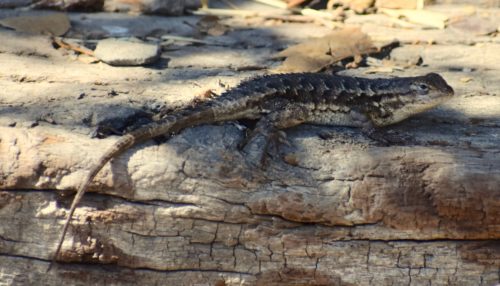
Another fence lizard, also warming itself this week on our railroad-tie front steps, has regrown most of its original tail. The dark section where it broke off can easily be seen. It’s important to male lizards to get their tails back. Female lizards aren’t interested in them until they do.
I’ll close with a couple of my favorite poems, both set in pre-shelter-in-place times. They’re by Pulitzer Prize-winning poet Alan Dugan (1923-2003).
On a Seven-Day Diary
Oh, I got up and went to work/ and worked and came back home/ and ate and talked and went to sleep./ Then I got up and went to work/ and worked and came back home/ from work and ate and slept./ Then I got up and went to work/ and worked and came back home/ and ate steak and went to sleep./ They I got up and went to work/ and worked and came back home/ and ate and fucked and went to sleep./ Then it was Saturday, Saturday, Saturday!/ Love must be the reason for the week!/ We went shopping! I saw clouds!/ The children explained everything!/ I could talk about the main thing!/ What did I drink on Saturday night/ that lost the first, best half of Sunday?/ The last half wasn’t worth this “word.”/ Then I got up and went to work/ and worked and came back home/ from work and ate and went to sleep,/ refreshed but tired by the weekend.
Tribute to Kafka for Someone Taken
The party is going strong,/ The doorbell rings. It’s/ for someone named me./ I’m coming. I take/ a last drink,/ a last puff on a cigarette,/ a last kiss at a girl,/ and step into the hall,/ bang,/ shutting out the laughter. “Is/ your name you?'” “Yes.”/ “Well come along then.”/ “See here. See here. See here.”

